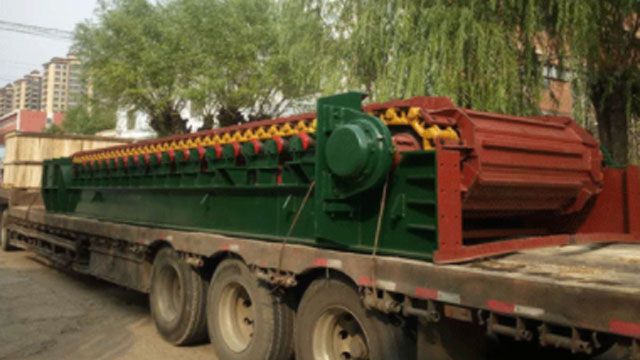The heavy-duty plate feeder introduces the distance measuring sensor, which mainly measures the height of the material layer transported by the equipment. When the plate feeder is running, the materials move all the time, so the contact distance measuring sensor cannot be used, and the non-contact distance measuring sensor can only be used. The following briefly introduces the principles and characteristics of three common non-contact distance measuring sensors. So what non-contact distance sensors are usually installed on heavy plate feeders?

1. Laser distance sensor
During operation, the transmitter emits a very thin laser beam to the target, and the photoelectric element receives the laser beam reflected by the target. The timer measures the time from the emission to the reception of the laser beam, and calculates the distance from the transmitter to the target through the speed of light and time, so as to achieve the purpose of speed measurement. At present, laser sensors use the principle of statistics to ensure the response speed. Short response time, accurate measurement parameters and stable performance.
2. Ultrasonic (sonar) distance sensor
The piezoelectric chip emits high-frequency mechanical wave, which has good directionality and can become directional propagation of rays. The mechanical wave is reflected after touching the object to form an echo. Due to the penetration of ultrasonic wave, it touches the moving object to produce Doppler effect, the probe receives the echo, and the distance from the measuring point to the target can be calculated with reference to the time difference. It is characterized by reliable operation, convenient installation, small launch angle and high sensitivity.
3. Infrared distance sensor
The sensor has a pair of infrared signal transmitting and receiving diodes. The sensor emits a beam of infrared light and forms a reflected signal after irradiating the object. The receiving end receives the reflected signal, and then uses CCD image to process the data of the time difference between transmission and reception. The distance of the object is calculated after being processed by the signal processor. The utility model has the advantages of convenient installation, wide synchronous measurement range, convenient measurement, and multiple synchronous input terminals.
The material conveying channel of heavy plate feeder is a semi closed channel composed of breast board and chain board. When the material is running, it presents a similar rectangular shape. In the process of operation, the material is in direct contact with the chain board. With the impact of falling materials from high places and the friction of materials on the chain board, the deformation and wear of the chain board are inevitable. The image information sensor is used to collect the real-time information of the chain board, We can observe the operation of the chain plate, find the worn and deformed individual chain plate for replacement, find the wear trend of the chain plate according to the information comparison, and prepare spare parts in advance to prevent equipment shutdown, production line stagnation and other accidents caused by insufficient preparation.